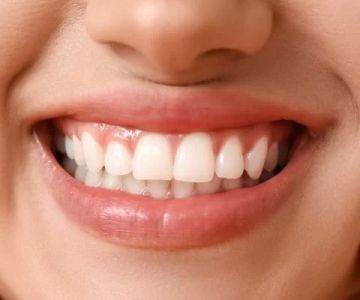- 1-Understanding-White-Patches-in-the-Mouth
- 2-Common-Causes-of-White-Patches
- 3-Treatment-Options-for-White-Patches-in-Mouth
- 4-When-to-See-a-Dentist
- 5-Practical-Tips-to-Prevent-White-Patches
1. Understanding White Patches in the Mouth
White patches in the mouth can be unsettling and may indicate various underlying conditions. These patches often appear as flat, thickened, or slightly raised white areas on the tongue, cheeks, or gums. Understanding what causes these lesions is the first step in determining how to treat white patches in mouth effectively.
Some white patches are harmless and resolve on their own, while others may signal infections or precancerous changes requiring prompt attention.
1.1 Why Early Detection Matters
Recognizing persistent white patches early allows timely treatment, reducing risks of complications. Regular self-examination and awareness of changes in the oral cavity are crucial for oral health maintenance.
2. Common Causes of White Patches
White patches can stem from a range of causes including:
- Leukoplakia: Thickened, white patches often caused by irritation such as tobacco use.
- Oral Thrush: A fungal infection presenting as creamy white lesions that can be wiped off.
- Lichen Planus: An inflammatory condition causing white, lace-like patches.
- Trauma or Irritation: From biting, dental appliances, or rough foods.
2.1 Case Example
A patient noticed white patches on the cheek lining that did not disappear. After evaluation at Dentistry Toothtruth, it was diagnosed as leukoplakia linked to smoking. Early treatment helped prevent further progression.
3. Treatment Options for White Patches in Mouth
Treatment varies depending on the cause:
- Oral Hygiene Improvement: Regular brushing and rinsing can aid mild irritations.
- Antifungal Medications: For oral thrush, prescribed antifungal rinses or lozenges are effective.
- Medical Monitoring and Biopsy: Persistent leukoplakia requires monitoring, and sometimes biopsy, to rule out malignancy.
- Eliminating Irritants: Quitting tobacco and avoiding spicy foods reduces irritation-induced patches.
3.1 Natural Remedies and Supportive Care
Some people find relief using saltwater rinses, aloe vera gel, or maintaining a balanced diet to support oral tissue healing.
4. When to See a Dentist
If white patches persist beyond two weeks, cause pain, or are associated with other symptoms like bleeding, professional evaluation is crucial. Dentists can provide accurate diagnosis and appropriate treatment plans.
Early consultation at trusted clinics like Dentistry Toothtruth enhances outcomes and ensures oral health is safeguarded.
5. Practical Tips to Prevent White Patches
Prevention includes:
- Avoiding tobacco and excessive alcohol use.
- Maintaining excellent oral hygiene.
- Regular dental check-ups.
- Managing systemic conditions like diabetes.
These habits support overall mouth health and reduce the risk of developing white patches.
To explore effective products and professional advice on how to treat white patches in mouth, visit Dentistry Toothtruth for trusted resources tailored to your oral care needs.







 Enrique M Ochoa DDS Inc3.0 (36 review)
Enrique M Ochoa DDS Inc3.0 (36 review) Sage Dental of Downtown Orlando4.0 (541 review)
Sage Dental of Downtown Orlando4.0 (541 review) Jiangyun Sheng, DMD0.0 (0 review)
Jiangyun Sheng, DMD0.0 (0 review) American Unity Dental4.0 (177 review)
American Unity Dental4.0 (177 review) Lassin Dentistry5.0 (200 review)
Lassin Dentistry5.0 (200 review) New England Endodontic Solutions4.0 (111 review)
New England Endodontic Solutions4.0 (111 review) The Importance of Oral Health Education During Pregnancy for a Healthy Pregnancy
The Importance of Oral Health Education During Pregnancy for a Healthy Pregnancy Best Tips for Brushing Your Teeth Properly for Healthy Gums: Essential Techniques for Oral Health
Best Tips for Brushing Your Teeth Properly for Healthy Gums: Essential Techniques for Oral Health Why Skipping Dental Checkups Can Lead to Bigger Oral Health Problems
Why Skipping Dental Checkups Can Lead to Bigger Oral Health Problems Advantages of Porcelain Dental Restorations
Advantages of Porcelain Dental Restorations How Can Diabetes Cause Tooth and Gum Problems? Preventing and Managing Oral Health Issues
How Can Diabetes Cause Tooth and Gum Problems? Preventing and Managing Oral Health Issues Healthy Habits for Promoting Good Oral Health and Hygiene: Tips for a Healthy Smile
Healthy Habits for Promoting Good Oral Health and Hygiene: Tips for a Healthy Smile